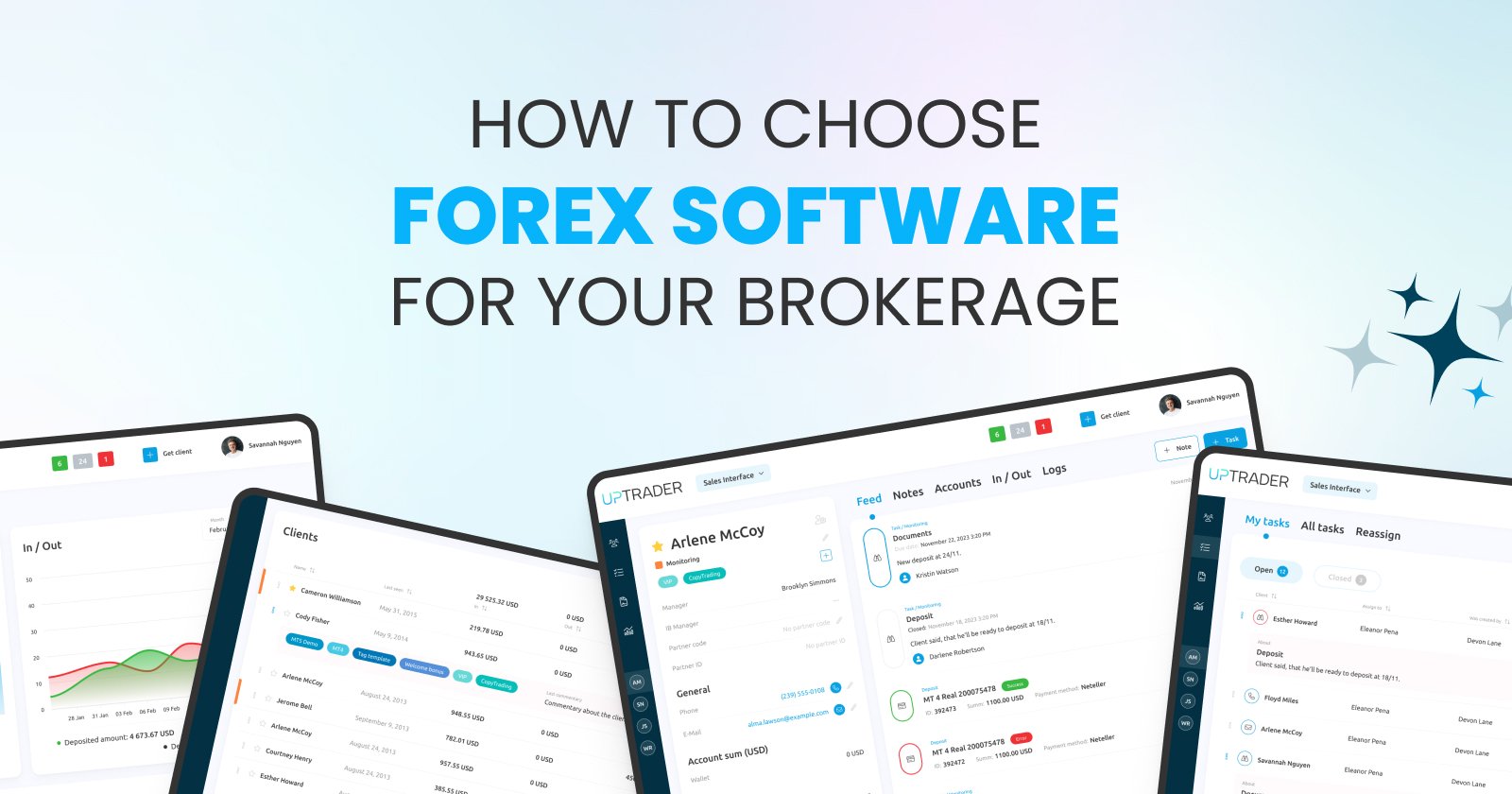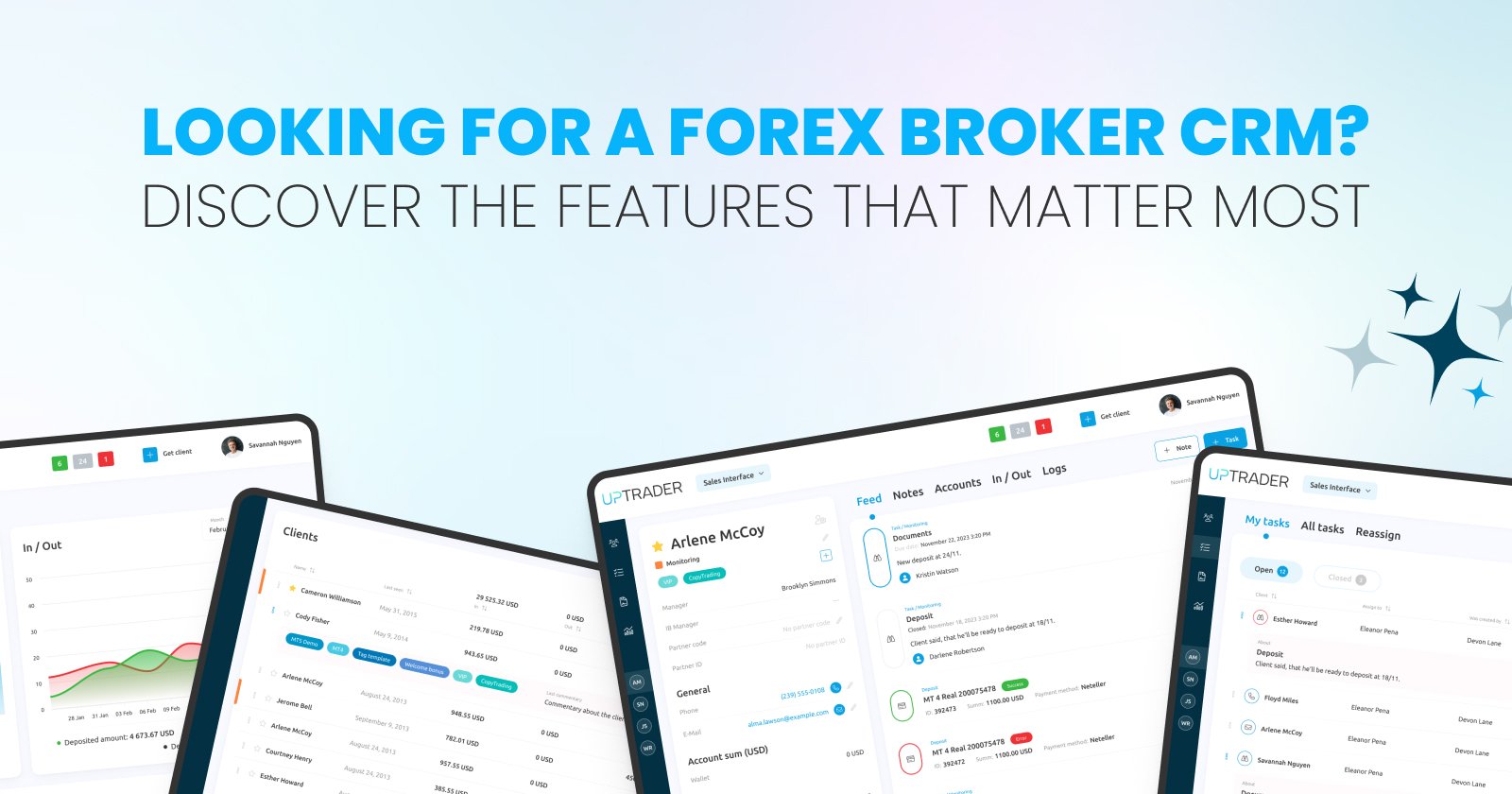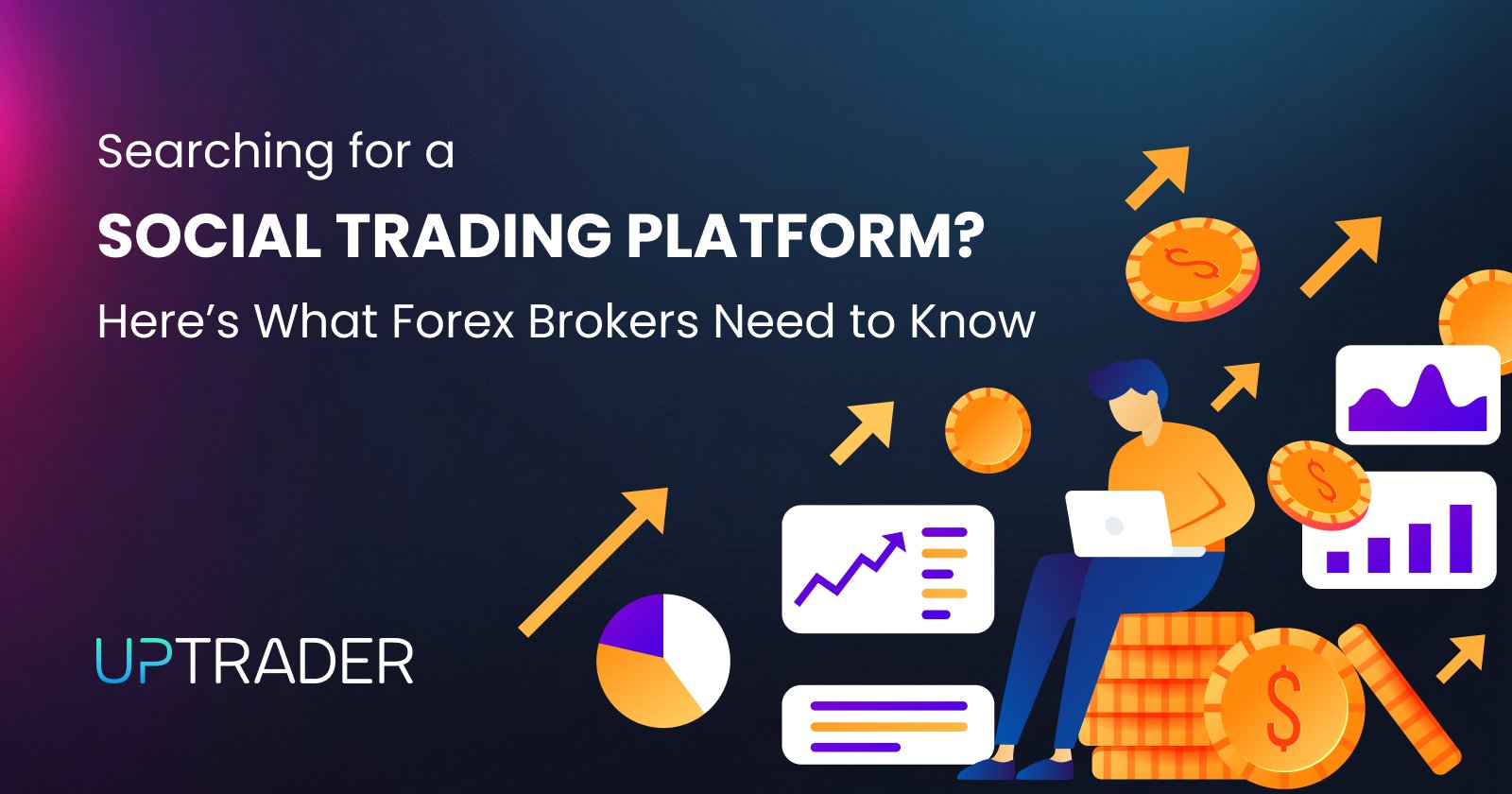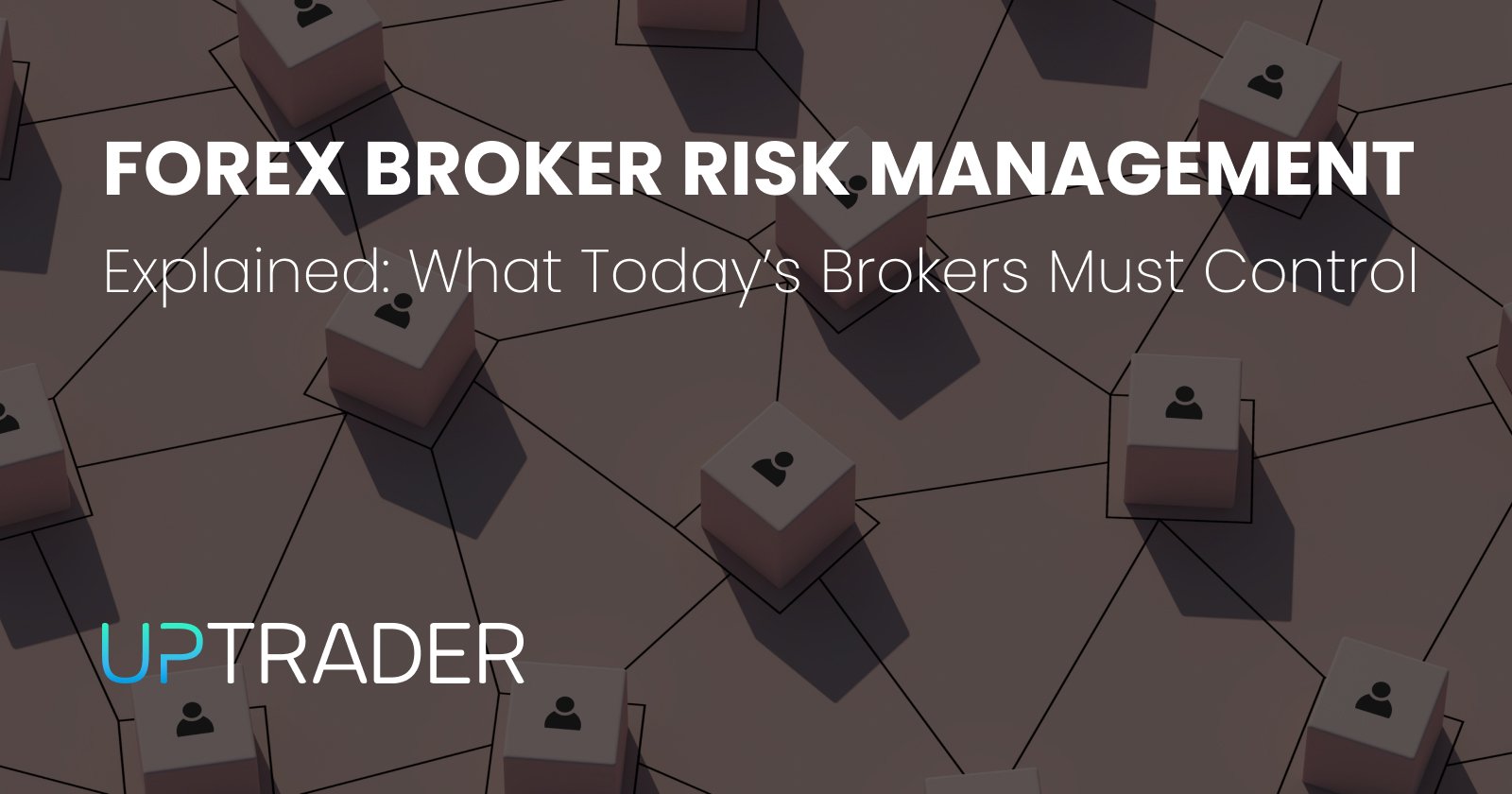How to Choose Forex Software for Your Brokerage

Share this publication:
Establishing a Forex brokerage is undoubtedly a challenging and promising entrepreneurial opportunity. Like any other business in the finance industry, success is ultimately achieved through implementation rather than just ideas. Everything starts with execution, and to execute flawlessly requires sophisticated, up-to-date technology. As a broker, one of your top priorities will be selecting forex software, which will dictate your success.
Because of the high number of platform providers available, these choices can be daunting. This does not mean that you won’t be able to identify what step to follow and what should be the cornerstone of your approach. Identifying gaps that need to be solved will make a significant difference. By the end of this guide, you will have an understanding of how to successfully select software for your brokerage, which puts your business goals at the forefront.
Why the Right Forex Software Matters
The simplest answer lies here: software that gives you an advantage over your competitors will always stay at the top of your priority list.
Trust is an essential pillar in Forex comes along with the speed and reliability of required services and tailored software. Traders expect execution and uptime within Forex services to be effortless, with no connection or transition issues. Achieving this depends on your software stack, having a robust and reliable program ensures optimal Forex service performance. Using the wrong software can lead to latency issues, hinder user experience, expose your company to an unmanageable amount of non-compliance risks and, worst of all, give up clients.
In short, your software isn't just a tool — it's the foundation of your brokerage.
Step 1: Define Your Business Model
Not all brokerages are created equal. Are you planning to operate as a full-service broker, or focus on a white-label model? Will you provide educational content, copy trading, or social trading? Will you offer cryptocurrency alongside forex? Your answers will help you determine the type of forex broker solutions you need.
For example:
- A-book brokers need tight integrations with liquidity providers and a transparent execution model.
- B-book brokers may prioritize risk management tools and client profiling.
- Hybrid brokers need a balance of both.
Understanding your model helps you choose a forex software provider that supports your operational style.
Step 2: Core Platform vs. Add-Ons
Your core trading platform is the engine of your brokerage. Most brokers use industry-standard platforms like DXTrade or cTrader. But there’s more to a brokerage than just trade execution. You also need:
- CRM systems to manage leads, clients, and communication.
- Back office tools for tracking performance, payments, and compliance.
- Risk management systems to monitor exposure.
- Payment gateways to handle deposits and withdrawals.
Some forex software providers offer all-in-one solutions, while others specialize in just one area. Both models can work — but you must decide whether you want modularity or convenience.
Step 3: Evaluate White Label vs. Full License
For many startups, a white label solution is the fastest route to market. These are turnkey offerings provided by established brokers or technology companies. You get access to a branded version of their platform, with hosting, tech support, and sometimes liquidity included.
However, there are trade-offs:
- White label: Lower upfront costs, faster setup, but limited customization and control.
- Full license: Higher costs, longer integration time, but total control over branding, features, and growth.
If you're just testing the waters or have a limited budget, starting with a white label might make sense. But if you're committed to long-term growth and want full autonomy, investing in licensed forex broker software can pay off in the long run.
Step 4: Security and Regulation
Forex is a high-stakes environment. Traders trust you with their money, and regulators expect strict compliance. Your forex software provider must offer bank-grade security features and support for compliance.
Look for:
- Two-factor authentication (2FA)
- Encrypted data storage
- Audit trails
- AML/KYC integrations
- GDPR compliance (if operating in the EU)
Even if you're not regulated yet, choosing software that supports regulatory features can save you time and money down the road.
Step 5: User Experience (UX) and UI
You might have the best spreads in the market, but if your software is hard to use, clients will go elsewhere. Today’s traders — especially retail clients — expect intuitive dashboards, fast onboarding, and real-time access to their accounts.
Request demos from several forex software providers, and test the user interface as if you were a client. Check mobile responsiveness, load times, layout, and language support. Remember, a clean and efficient front-end makes your brokerage look more professional and trustworthy.
Step 6: Customization and Scalability
Your software should grow with your business. That means being able to customize workflows, dashboards, reports, and even trading conditions as you scale.
Ask providers:
- Can we add custom plugins or third-party tools?
- How easy is it to localize the software for different regions?
- Can we create custom trading conditions or promotions?
- What happens if we go from 100 to 10,000 clients — can the system handle it?
Good forex broker solutions should be modular and flexible, not rigid or "one-size-fits-all."
Step 7: Liquidity and Integration Support
Many forex broker software systems come with APIs or built-in connections to liquidity providers (LPs). If you’re an A-book or hybrid model, you’ll need reliable LPs for pricing and execution.
Ensure your chosen software supports:
- FIX protocol or other common LP integration methods
- Real-time market data
- Order routing with low latency
- Multiple LPs for price aggregation
If your provider also offers liquidity (some do), make sure to compare spreads, commissions, and execution quality. Avoid being locked into a bad deal because the tech and liquidity come bundled.
Step 8: Customer Support and Reputation
Your relationship with your forex software provider doesn’t end at launch. You’ll need ongoing support for upgrades, bug fixes, integrations, and emergencies.
Look for:
- 24/7 technical support
- Dedicated account managers
- Clear SLAs (service-level agreements)
- A transparent roadmap for software updates
It also helps to research the provider’s track record. Ask for client references or look for reviews in industry forums. If other brokers complain about downtime or poor support, that’s a red flag.
Step 9: Cost Transparency
Costs can vary widely depending on what you need. Some providers charge setup fees, monthly subscriptions, transaction fees, or even revenue-sharing models.
Always ask for a complete breakdown, including:
- Setup or licensing fees
- Maintenance or support charges
- Per-user or per-client costs
- API or integration costs
- Volume-based or revenue-sharing fees
The best forex broker software may not be the cheapest — but it should deliver value equal to or greater than the price.
Step 10: Test Before You Commit
Finally, never commit to a long-term contract without testing the product. Ask for a trial period, sandbox environment, or limited launch.
Use this time to:
- Train your team
- Stress-test the system
- Verify integration with other tools
- Collect early feedback from beta users
Even the most impressive demo can fall short in a real-world scenario, so hands-on experience is key.
Final Thoughts
Choosing the right forex software can mean the difference between growth and stagnation, between loyal clients and churn. It's not a decision to take lightly.
Focus on your business model, prioritize reliability and security, and think long-term. Ask the tough questions. Demand transparency from your forex software provider, and make sure their vision aligns with yours.
There is no “perfect” software that fits all brokerages. But there is a perfect fit for you — you just need to look for it.
As the industry evolves, traders become more sophisticated, and regulations tighten, the right technology stack will not just support your brokerage — it will drive it forward.
If you're looking for a powerful and comprehensive Forex CRM system that covers all these essential features and more, UpTrader CRM is the solution for you. Ready to take your brokerage to the next level? Contact a consultant on our site today to schedule a demo and see how UpTrader CRM can transform your business!







